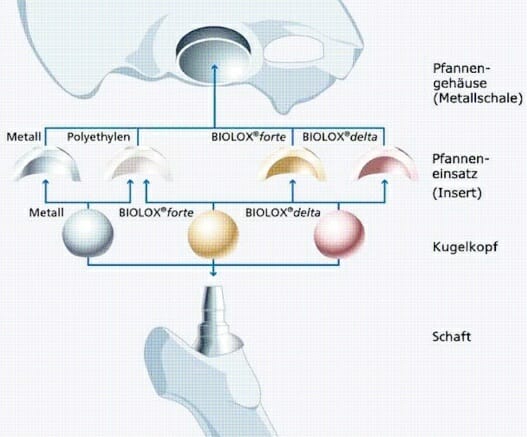Since when have you been working as a physician?
Dr. Werner Hauck: I have been working as a physician since 1984 and have been familiar with joint surgery right from the start. I have been using the AMIS method for more than 8 years, and have performed about 1,000 hip replacements with this method to date. Overall, I have performed more than 4.000 hip and knee joint replacements.
How many hip surgeries do you do per year?
Dr. Werner Hauck: Every year, about 350 new hip joints are implanted.
How many of these are performed using the AMIS method?
Dr. Werner Hauck: Approximately 1/3 of them are performed using the AMIS method.
Why is this method not used to perform all surgeries?
Dr. Werner Hauck:The decision about which implant to use and how to gain access to the hip joint is dependent on several factors: First, the anatomical condition of the patient has to be considered; the BMI should not be much higher than 30; and in the area of the planned incision, i.e., in the groin, there must be no skin irritation. Second, the form and stability of the bones play a role. The age and any secondary diseases are not really important.
What exactly is the AMIS method?
Dr. Werner Hauck: Usually, when a hip replacement is performed, individual muscles as well as the corresponding nerves are cut or damaged. The AMIS method represents a convincing evolution in hip endoprosthetics. AMIS > Anterior Minimally Invasive Surgery. The AMIS access is the only route to the hip joint where no muscles are cut and no nerves are damaged. It leads into the joint from the front at an angle, on the side of the groin between the supply areas of the two main nerves of the upper thigh, and thus avoids any impairment. The AMIS method is a very gentle treatment method where the patient has less pain and where recovery starts much faster.
What are the advantages of the AMIS method?
Dr. Werner Hauck: The advantages are that the patient spends less time in the hospital and that rehabilitation is faster; that is, the patient stays in the hospital for about 5-7 days and returns to his or her normal life after an additional 3 weeks of rehabilitation resp. physiotherapy. Many of our patients start their rehabilitation in the second week after the surgery in our associated Center for Rehabilitation (ZAR).
For how long does a patient have to use crutches?
Dr. Werner Hauck: Almost all patients usually need crutches for only 3 weeks. In individual cases, it makes sense to use them for a longer time to achieve a better/more harmonious gait. Every so often we catch patients without crutches even in the first days because they just feel well and free of pain. But this is not really what we want.
Can I do sports again following hip replacement surgery with the AMIS method?
Dr. Werner Hauck: It is possible to do sports again, but there are some types of sports that we recommend and others that we only recommend conditionally.
Can you give us some examples?
Dr. Werner Hauck: We recommend sports such as golf, hiking, swimming, dancing, cycling, etc. The ideal kind of sports is Nordic walking. What we do not recommend are stop&go types of sports, such as tennis, soccer, and jogging. However, this depends on the intensity with which these activities are done. This should then be discussed individually on a case-by-case basis.
Which type of anesthesia is applied with the AMIS method?
Dr. Werner Hauck: Most procedures are performed under general anesthesia, but it is also possible to perform the surgery using spinal anesthesia.
What is the location of Nardini Klinikum, where you and your team perform surgery?
Dr. Werner Hauck: Nardini Klinikum St. Johannis Landstuhl is located about 1 hour from Frankfurt am Main, directly next to Ramstein Air Base. In its immediate vicinity is Landstuhl Regional Medical Center (LRMC), which is the largest US Army medical center outside the United States, with a staff of about 3,300. Since we are such close neighbors, I have been used to treating US citizens for many years.
What is the composition of your team at Nardini Klinikum in Landstuhl?
Dr. Werner Hauck: My team consists of 11 physicians, 14 physiotherapists, and 40 female and male nurses. Since 2001, I have been the Chief Surgeon of the Orthopedic Clinic and the Director of the Department of Physical Therapy.
How many patients do you treat?
Dr. Werner Hauck: In the Orthopedic Clinic, we treat 2,500 inpatients and about 5,000 outpatients every year, as well as numerous emergencies, of course.
How is the hospital equipped?
Dr. Werner Hauck: The hospital is equipped to perform all state-of-the-art diagnosis procedures, in particular in Radiology with MRI, CT, and angiography being available 24/7. For patients with critical health conditions, we have an intensive care unit with the appropriate specialist physicians and state-of-the-art equipment. Specialists from other disciplines are also available. Our patients are accommodated in single rooms with TV, Wi-Fi, and phone. Most of our staff speak good English.




